Island Peak Climbing
Conquer the Heights: Island Peak Expedition in Nepal’s Everest Region
Island Peak climbing, also known as Imja Tse, is one of the most popular trekking peaks in the Everest region of Nepal. Standing at an elevation of 6,189 meters (20,305 feet), it also offers an exhilarating climbing experience combined with breathtaking views of the surrounding Himalayan peaks.
Island Peak climbing expedition typically starts with a scenic flight from Kathmandu to Lukla, followed by a trek through the beautiful Sagarmatha National Park, a UNESCO World Heritage Site. The trek also takes you through picturesque Sherpa villages, dense forests, and across suspension bridges over roaring rivers. As you ascend, you will also acclimatize and soak in the stunning mountain vistas, including iconic peaks like Everest, Lhotse, Nuptse, and Ama Dablam.
Conquering Heights: The Thrilling Journey to Island Peak Summit
Reaching Island Peak Base Camp is an important milestone, where you’ll receive comprehensive training on climbing techniques, rope handling, and the use of climbing equipment. The ascent itself also involves traversing glaciers, navigating crevasses, and ascending steep snow and ice slopes. Moreover, It requires physical endurance, technical skills, and the guidance of experienced Sherpa climbers.
The highlight of Island Peak climbing is the summit day. Starting early in the morning, you’ll make your way up the icy slopes, using fixed ropes for safety. As you reach the summit, a sense of achievement and awe sweeps over you, surrounded by panoramic views of towering peaks stretching to the horizon. The feeling of standing atop Island Peak is truly exhilarating and rewarding.
A Gateway to Himalayan Heights for Experienced Mountaineers
Island Peak climbing is suitable for climbers with prior mountaineering experience and a good level of fitness. It offers an excellent opportunity to gain high-altitude climbing experience and can serve as a stepping stone for aspiring mountaineers who have their sights set on bigger Himalayan peaks.
Optimal Seasons for Conquering Island Peak: Spring and Autumn Guide
The best time to climb Island Peak is during the spring (April-May) and autumn (September-November) seasons when the weather is relatively stable and favorable for climbing. However, proper preparation and acclimatization are crucial to ensure a safe and successful ascent.
Conquer the Heights: Island Peak – A Thrilling Adventure Amidst Everest’s Majestic Beauty
Island Peak climbing provides an unforgettable adventure, combining the thrill of mountaineering with the stunning beauty of the Everest region. It is a challenging yet immensely rewarding experience that allows you to push your limits, conquer a Himalayan peak, and create memories that will last a lifetime.
Itinerary
-
Day 01: Arrival at Tribhuwan Airport and move to Hotel.
Upon our arrival at the Tribhuwan International Airport (TIA) in Kathmandu, a representative from Everest Expeditions Nepal will pick us up and take us to our hotel. After checking in, we discuss for our trip preparation and also to meet our crew. In the evening there will be a welcome dinner where we will be able to enjoy authentic Nepali cuisine. Overnight in Kathmandu.
-
Day 02: Fly to Lukla then trek to Phakding
After breakfast, we take an early morning flight to Lukla. After flying above the breathtaking green and white mountains, we reach Tenzing-Hillary Airport at Lukla. This is one of the most beautiful air routes in the world culminating in a landing on a hillside surrounded by high mountains. Upon our arrival at Lukla, we meet the rest of our crew members. Next, we begin our trek through the prosperous village of Lukla to Phakding. To assist in acclimatization, we only have a short hike today. However, if interested in additional activities, we can take a side trip to a nearby monastery. Overnight in Phakding.
-
Day 03: Phakding to Namche Bazaar
After breakfast we walk through beautiful pine forests and then along Dudh Koshi River ending our nature-filled journey at Namche Bazaar. After walking for almost over an hour, we come across the glistening Mt. Thamserku (6,608m) on our right and also experience the serenity of pine, fir and juniper forests throughout our journey. If the weather is clear, we may even catch a glimpse of Mt. Everest peering over the Lhotse-Nuptse ridge. We continue walking until we reach the entrance to Sagarmatha National Park, Namche Bazaar, the gateway to Mt. Everest and main trading centre of this region. This day we cross five suspension bridges, the last one also known as the Hillary Bridge being the highest. It is an uphill walk from Hillary Bridge to Namche Bazaar. Overnight in Namche Bazaar.
-
Day 04: Namche Bazaar : Acclimatization Day
Today is set aside for acclimatization. Health experts recommend that instead of being idle we stay active and move around even during the rest day. We can either stroll around Namche’s quaint villages and get acquainted with the Sherpas and their rich culture, or we can hike up to the Everest View Hotel and enjoy an up-close view of the mighty Everest. While in the Namche village or upon returning from the hike to the Everest View Hotel, trekkers may also visit the local museum containing exhibits displaying the area’s native flora and fauna as well as the history of the Mount Everest region.
For trekkers who want to hike for a little longer, a hike to Khumjung village (5-6 hours) may also be an option. In the village we can visit the Edmund Hillary School and Khumjung Monastery (a monastery famous for housing the head of the Yeti!). Overnight in Namche Bazaar.
-
Day 05: Namche Bazaar to Tengboche
After breakfast, we trek towards Tengboche. It is an easy walk from Namche to Phunki. Upon reaching Phunki, we ascend towards Tengboche, a village that houses the very famous Tengboche monastery which is the largest monastery of the Everest region. Located amidst the Sagarmatha National Park (a UNESCO World Heritage Site of “outstanding universal value”), it is draped with the panoramic 360-degree view of the Himalayas, including Mt. Everest, Nuptse, Lhotse, Ama Dablam and Thamserku and is also the biggest monastery in the Khumbu region. We visit the monastery the same day at around 3 p.m. to witness a religious ceremony. Overnight in Tengboche.
-
Day 06: Tengboche to Dingboche
With the Himalayas as its backdrop, the monastery in Tengboche is in a perfect location to enjoy the beautiful Himalayan landscape. We visit the monastery in the morning and take pictures of the amazing landscape. Then we begin our trek by walking through lush forests of birch, conifers and rhododendrons on an easy path. This picturesque trail then dips down to Debuche, crossing the Imja River before climbing up to Pangboche (We can either walk in the upper or lower Pangboche trails). We are most likely to choose the upper Pangboche trails as it provides more pristine view of the Himalayas. We also visit the Pangboche monastery. From here onwards, the walk is fairly moderate as we enter the Imja Valley. The valley gradually unfolds as we approach the confluence of the Lobuche River. We descend into the river and begin the climb up to Dingboche. On arrival at Dingboche, we are greeted by a beautiful array of fields enclosed by stone walls to protect barley, buckwheat and potatoes from the cold wind and grazing animals. Overnight in Dingboche.
-
Day 07: Dingboche to Chhukung
Dingboche is a summer settlement and here the great peaks of Ama Dablam, the ridge of Nuptse-Lhotse, Tawache and Chalotse surround us. We begin today’s trek to Chhukung by walking through stone-walled fields, Imja Khola valley before walking in glacier moraines. On our walk, we will be surrounded by Lhotse and Ama Dablam mountains. Later, beyond Bibre village we see Island Peak soaring above us. The trail ahead is intersected by icy streams. We reach Chhukung, a small settlement in about half an hour from Bibre. From here, directly across the valley is the fantastic Ama Dablam and the Amphu Labsa mountains. Overnight in Chhukung.
-
Day 08: Acclimatization: Climb Chhukung Ri and trek back to Chhukung
Today is another day set aside for acclimatization. Climbing Chhukung Ri should help our body adjust to the high altitude. Chhukung Ri is a peak located directly above the Chhukung village. The climb to Chhukung Ri involves some easy scrambling near the summit. From the top, we can look directly across the valley for a fantastic view of Ama Dablam and Amphu Labsa peaks. We descend back to Chhukung to spend the night.
-
Day 09: Chhukung to Island Peak Base camp
The trek to Island Peak Base Camp is on a fairly steep trail. First, we climb south then turn east to the main line of the valley. We then walk on a winding path below the southern flank of the moraine from the Lhotse Glacier. Next, we continue walking on a pleasant trail along a streamside. The route to the Amphu Lapcha lies to the southeast. A crisscross route through the Imja and Lhotse glacier moraines leads to a wide valley flanking the SW side of Island Peak. Overnight at Island Peak Base Camp.
-
Day 10: Pre-Climb training on Island Peak Base Camp
We begin our pre-climb training today after breakfast. Our guides will provide training on peak climbing techniques and the proper ways of using climbing gears such as the ice axe, climbing boots and crampons, harness, ascender, etc. The training will also include using ropes to go up and down. Although it is not mandatory to have prior training for Island Peak climbing, we strongly believe that some training experience will boost your confidence and climbing skills to increase the chances of scaling the summit as well as to fully enjoy the experience. Usually we will be climbing on rock surface for up to around 5770m. After that, we climb on ice and use ropes when necessary. However, the use of the rope and the length depends upon the season and the crevasses. We can spend the rest of the day hiking to high camp and back or resting for the next day’s climb. Overnight at the base camp.
-
Day 11: Island Peak Base Camp to Island Peak Summit, back to base camp or Chhukung
We wake up early today at around 12 to 1 am and have our breakfast before beginning our climb. It is important we reach the summit before noon because in the afternoon the strong winds in the highlands might become a barrier for a successful summit. The trail moves up beyond the base camp for several hundred meters before striking off the steep hillside. Initially sandy, the path soon turns to grass before becoming boulder strewn. As we climb up the hill, we will see that the slope narrows and the trail enters a steep rock channel. We climb the rock gully. This is not difficult, but there are several short rock steps to climb before we emerge on the right side of the gully. The route then follows a ridgeline, which leads to an exhilarating and exposed traverse onto the snout of the summit glacier. The guides will fix a rope when required. A steep snow slope leads us onto the summit ridge. Both fixed rope and man rope will be used during the climb for safety. We use fix rope after successfully climbing on rock. The length of the rope will usually be of 350m. However, the length depends on the time of the season and the crevasses
There are two newly formed crevasses which are approximately 3 and 4 meters long. We will be using ladders to cross them. After enjoying the summit views, and taking pictures, we descend all the way to Island Peak Base Camp where some of our crew is waiting for us. We celebrate on our successful Island Peak climb.
-
Day 12: Island Peak Base Camp to Pangboche
Today’s walk will be a much easier as we descend to the lower altitudes. Following the same route back through the wide valley of Khumbu Khola, we pass through the beautiful Sherpa villages Orsho and Shomare. We can also take a different trail to visit the Gompa in Upper Pangboche, which is believed to be the oldest in the Khumbu region or take the regular trail to reach Pangboche. Pangboche is a scenic village surrounded by Everest to its north, Ama Dablam, Thamserku, and Kangtaiga to the east, the Kongde range to the south and the Imja Tse River flowing through the wide fertile valley.
-
Day 13: Pangboche to Namche Bazaar
From Pangboche we retrace our steps down to the Imja Khola and up through the forest to Tengboche. If interested, we can also visit nuns at the Tengboche monastery. After lunch at Tengboche, we continue through the hillside blanketed by rhododendron and juniper trees. After crossing the bridge over the Dudh Koshi River, our trail follows the Dudh Koshi gorge descending rapidly through the pine forests before reaching Sansa. We keep a lookout for wildlife such as mountain goats, snow leopards, colorful pheasants, etc., while passing through the forest. After passing a chorten, we reach the army camp at Namche Bazaar. Overnight in Namche Bazaar.
-
Day 14: Namche Bazaar to Lukla
The trail descends steeply downward so we need to walk cautiously as our shaky legs continuously battle the rocky terrain. After crossing the suspension bridges over the fast flowing Dudh Koshi and its tributaries, the trail becomes more level and natural. After our arrival in Lukla, we stretch those sore legs and recall the experiences of the last couple of weeks. Overnight in Lukla.
-
Day 15: Fly to Kathmandu
We catch an early morning flight to Kathmandu after our long mountain journey. After reaching Kathmandu, we can take a rest or do some souvenir shopping. If we want to explore any other areas of Kathmandu, we may do that today. Our guides can help you with both souvenirs shopping or sightseeing. There will be a farewell dinner in the evening to celebrate the climbers’ successful summit of the Island peak. Overnight in Kathmandu.
-
Day 16: Final departure
Your adventure in Nepal comes to an end today! There is nothing to do but trade emails with your travel companions and organize your photos. A representative from Everest Expeditions Nepal will take you to the airport, approximately 3 hours before your scheduled flight. On your way home you’ll have plenty of time to plan your next adventure in the wonderful country of Nepal.
Include / Exclude
Cost Includes:
-
- Transportation cost for a transfer from the Airport to the hotel while arriving and departing by Private Vehicle
- Kathmandu city Stay for 3 nights with BB Plan
- Sightseeing in Kathmandu for a day provided with an experienced city guide, all entrance fees, and private vehicle
- Two-way scenic Kathmandu to Lukla flight
- All required ground transportation in private transport during the whole trip
- Climbing permits for Island Peak including the Local Entry Permit and the Sagarmatha National Park Permit
- Tea House accommodation during the entire trek along with the Camping accommodation as per the Island Peak Climbing Itinerary
- All meals during trek & climb including Breakfast, Lunch, and Dinner
- An experienced and professional trek & climbing guide with great conversation skills
- Porters to carry your luggage as required
- All essential climbing gears for the expedition
- Kitchen equipment for the camping period
- Basic first aid kits and medicines
- Staff salary and insurance
- Welcome Dinner and Farewell dinner in Kathmandu
- Certificate of summit climbing completion
- All taxes for government and required paperwork
Cost Excludes:
- Individual climbing gears
- International flight fare
- Visa charge
- Alcoholic Beverages
- Food charges in Kathmandu other than itinerary inclusions
- Travel insurance
- Cost of Self expenses
Price per person
Highest Access: 6,165m (20,226ft)
Duration: 18 days
Group Size: 02-35 persons
Entry & Exit: Lukla
Cost: Group Join Basic Advance Base Camp Services only
Single Person US $ 2795
02-04 Person US $ 2695 per person
05-08 Person US $ 2395 per person
09-12 Person US $ 2095 per person
12-15 People US $ 2000 per person
Grade: Peu Difficile + (PD+)
Meals: B/B plan in Kathmandu & B,L,D in during Driving and climbing period
Transportation: Car, Jeep, Mini Bus, flight
Best season: spring: April-May and autumn: September-October-November
Usefull Information
Island Peak Details
Island Peak is the most preferred trekking peak in Nepal. Island Peak was named in 1952 by Eric Shipton’s party since it appears as an island in a sea of ice when viewed from Dingboche.
Island Peak is a popular trekking peak in the Khumbu region but after big earthquake disasters, it becomes more technical and challenging with several crevasses. Requested to have an experienced expert to make your climbing successful. Everest Expeditions Nepal guarantee you for summit climbing.
Travel Insurance
This tour package doesn’t include your personal insurance you should have travel insurance covering emergency evacuation.
Accommodation
The accommodation in a valley and other major cities will be according to your requirements.
- 3 Star Hotel
- 4 Star Hotel
- 5 Star Hotel
Lodges, Guest Houses and Tented Camp during Trekking and Climbing period.
Visa
You can have Tourist Visa at Tribhuvan International Airport (TIA) on arrival. ‘On Arrival’ visa procedure is simple and very fast.
- Most Popular trekking peak in Nepal
- Everest is a mere 10 km away but blocked by massive Mt. Lhotse
- The peak (island) was actually used by Edmund Hillary and Tenzing Sherpa in 1953 as a training peak.
- It has a scenic view of Everest, Mt. Lhotse, Mt Makalu, and countless Himalayas.
- Island Peak climbing near the summit quite technical.
- This peak even suitable for beginners who have a dream to climb.
- It demands physical fitness and high altitude trekking experience.
- This climb requires basic climbing equipment.
- Accommodation during trekking and climbing at Lodges and at Tented camp.
- For mountaineering in Nepal Please bring your insurance coverage for trekking/Mountaineering.
Equipment List
-
 Best Seasons March to May, September to November
Best Seasons March to May, September to November -
 Group Size 2-20
Group Size 2-20 -
 Duration 16 DAYS BOOKING OPEN
Duration 16 DAYS BOOKING OPEN -
 Maximum Altitude 6189M
Maximum Altitude 6189M -
 Trek Difficulty Challenging
Trek Difficulty Challenging

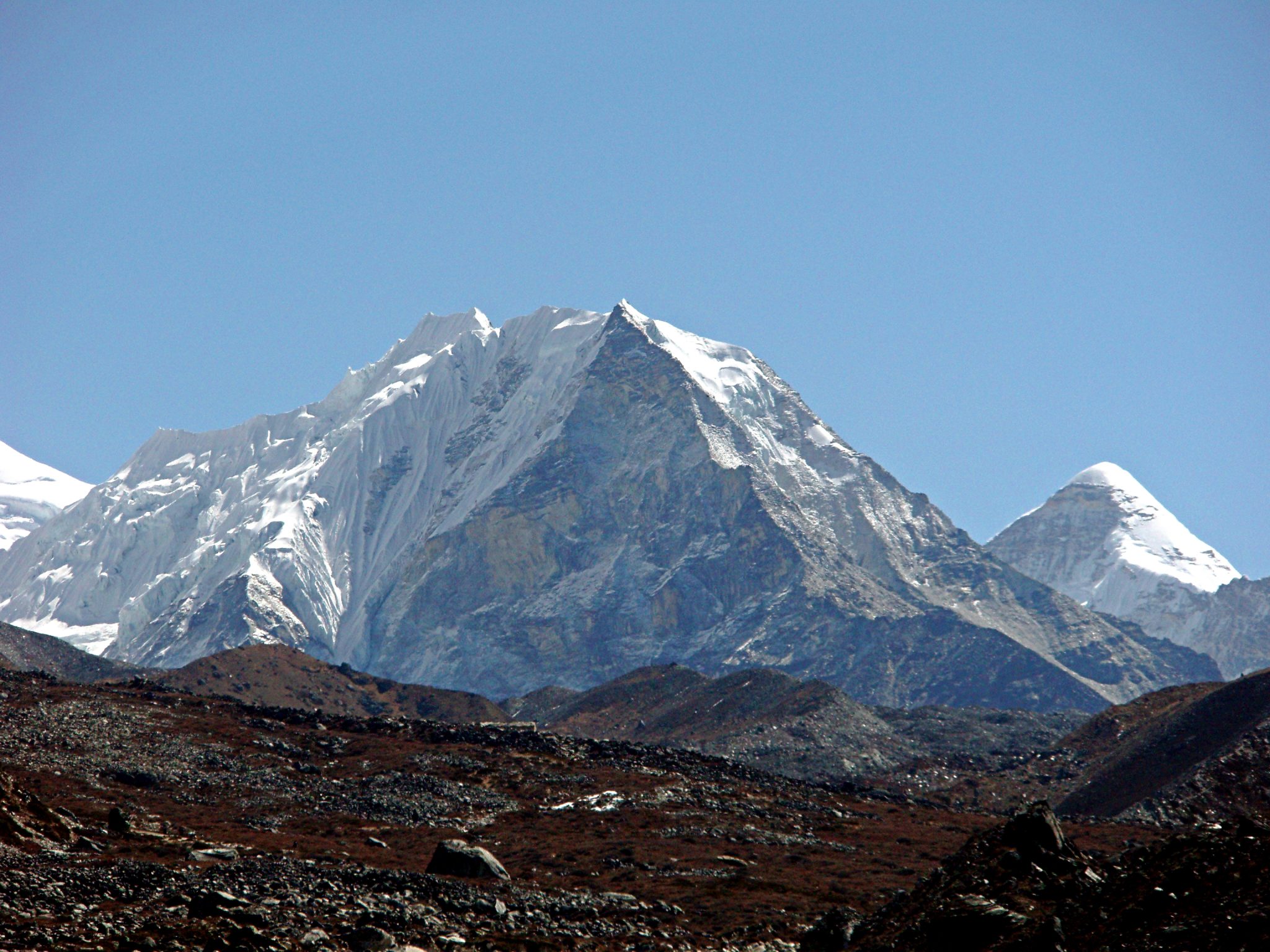


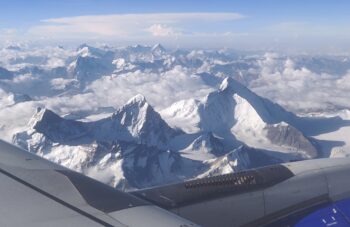
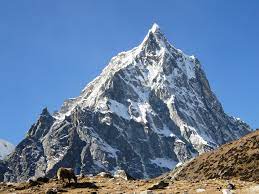
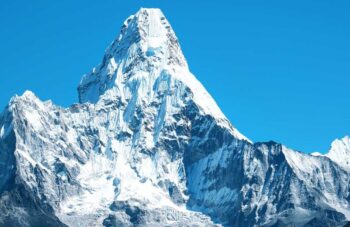
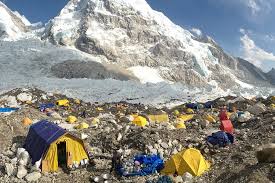
Leave a Reply